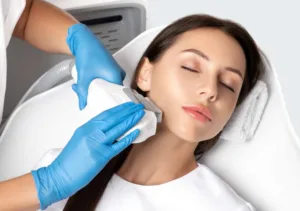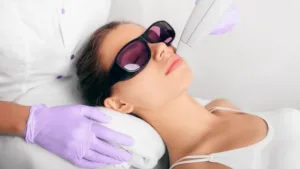Laser hair removal downtime can be a hassle, but it doesn’t have to be! After your treatment, you might experience some redness or irritation, and you want to get back to your routine quickly. Knowing how to care for your skin can make all the difference.
In this guide, we’ll share simple tips to help reduce downtime and ensure your skin heals smoothly. Whether you’re new to laser hair removal or looking for ways to improve your recovery, these strategies will keep you comfortable and confident. Let’s dive in!
Understanding Laser Hair Removal and Downtime

Laser hair removal downtime is an important topic to understand if you’re considering this popular treatment. Knowing what to expect can help ease your worries and ensure you’re ready for the process.
What Happens During a Laser Hair Removal Session
During a laser hair removal session, a special light targets the hair follicles to stop future hair growth. It’s quick and effective, but some people may experience redness or swelling afterward. This is perfectly normal!
Factors Influencing Downtime
Several factors can affect your downtime after the treatment. Your skin type plays a big role; sensitive skin may take longer to heal. The area being treated also matters. For example, areas like the bikini line might have more downtime than your legs.
Typical Side Effects
After the session, you might notice some redness, like a mild sunburn. This usually goes away within a few hours to a couple of days. Other side effects can include slight swelling or bumps, but these are usually temporary.
Pre-Treatment Preparations
Pre-treatment preparations are essential for ensuring a smooth and successful laser hair removal experience. By taking the time to get ready, you can minimize downtime and ensure your skin is in optimal condition for the procedure. For those considering this option, it’s important to follow the guidelines for Toronto laser hair removal to achieve the best results.
Skin Care Routine
Before your appointment, it’s important to have a good skin care routine. Start by moisturizing your skin daily. This keeps your skin hydrated and can make the treatment more comfortable. Look for gentle, fragrance-free products to avoid irritation.
Avoiding Certain Activities
In the days leading up to your treatment, try to avoid sun exposure. Too much sun can make your skin sensitive, which isn’t ideal for laser hair removal. If you’ve been in the sun, consider rescheduling your appointment.
Also, skip intense workouts that can make you sweat a lot. Sweating can irritate your skin, so give it a break.
Consultation with Your Technician
Lastly, don’t forget to have a chat with your laser technician. They can give you personalized tips based on your skin type and the area being treated. This way, you’ll be well-prepared for the best possible results.
Immediate Post-Treatment Care

Immediate post-treatment care is crucial for a smooth recovery after your laser hair removal session. Taking care of your skin right after the treatment can help reduce downtime and keep you comfortable.
Cooling Techniques
Right after your session, you might feel some warmth or see redness in the treated area. A great way to cool your skin is by using ice packs or a clean, cold cloth. Gently apply it to the area for about 10-15 minutes to soothe any discomfort. This can make you feel a lot better!
Gentle Skin Care Products
When it comes to cleansing, stick to a gentle, fragrance-free cleanser. Avoid scrubbing or using harsh soaps, as your skin may be sensitive. After washing, pat your skin dry with a soft towel—no rubbing!
Soothing Creams
Using soothing creams can also help your skin recover. Look for products with aloe vera or other calming ingredients. These can reduce redness and keep your skin hydrated.
Avoiding Irritants
During the first few days, steer clear of irritants like scented lotions or scrubs. You want to let your skin heal without any added stress.
Long-Term Skin Care Strategies
Long-term skin care strategies are essential after your laser hair removal treatment. Taking care of your skin not only helps it heal but also ensures you enjoy the best results for a long time.
Consistent Moisturizing
One of the best things you can do is to keep your skin moisturized. Use a gentle, fragrance-free moisturizer daily. This keeps your skin hydrated and helps it recover fully. Hydrated skin is happier skin!
Sun Protection
Sun protection is crucial, especially after laser treatments. Make sure to use a broad-spectrum sunscreen with at least SPF 30 whenever you go outside. Protecting your skin from the sun prevents irritation and reduces the risk of pigmentation changes. Reapply every two hours, especially if you’re sweating or swimming.
Regular Follow-Up Treatments
To maintain smooth skin, stick to your follow-up treatment schedule. Laser hair removal often requires multiple sessions for the best results. Talk to your technician about when to book your next appointment. Staying consistent can help you achieve long-lasting results.
Healthy Lifestyle Choices
Don’t forget that a healthy lifestyle also supports your skin. Eating a balanced diet, drinking plenty of water, and getting enough sleep can make a big difference in how your skin looks and feels.
Lifestyle Adjustments to Support Recovery
Making lifestyle adjustments to support recovery after laser hair removal is key to ensuring your skin heals well. Simple changes can help reduce downtime and improve your overall comfort.
Nutrition and Hydration
First, pay attention to what you eat and drink. Eating a balanced diet filled with fruits, vegetables, and lean proteins can help your skin heal faster. Foods rich in vitamins A, C, and E are especially good for skin health. Don’t forget to drink plenty of water, too! Staying hydrated keeps your skin plump and promotes healing.
Stress Management
Managing stress is another important factor. Stress can affect your skin and slow down the healing process. Try activities like yoga, meditation, or simply taking walks outdoors. Finding time to relax can help your skin recover and improve your mood.
Sleep and Rest
Getting enough sleep is crucial for recovery. Aim for at least 7-8 hours of sleep each night. This allows your body to repair itself and keeps your skin looking fresh. If you’re feeling tired, don’t hesitate to take short naps during the day.
Gentle Exercise
Finally, while you should avoid intense workouts right after treatment, gentle exercise like walking or stretching can boost blood flow and help your skin recover. Just listen to your body and avoid anything that feels too strenuous.
When to Consult a Professional
Knowing when to consult a professional after laser hair removal is important for ensuring your recovery goes smoothly. While some redness and swelling are normal, there are specific signs that should prompt you to seek expert advice.
Signs of Complications
If you notice unusual swelling that lasts more than a few days or redness that doesn’t fade, it’s time to reach out to your technician or dermatologist. Also, if you see any blisters, scabs, or signs of infection—like pus or increased pain—don’t wait to get help. These could be signs that something isn’t right.
Persistent Discomfort
If you’re experiencing discomfort that doesn’t improve with cooling techniques or soothing creams, it’s a good idea to consult a professional. They can recommend the best steps to relieve your discomfort and help your skin heal properly.
Questions and Concerns
Even if you’re not experiencing any complications, you might have questions about your recovery or what to expect next. Don’t hesitate to call your technician if you’re unsure about your aftercare or when to schedule your next treatment. They’re there to help you!
Follow-Up Appointments
Regular follow-up appointments are also crucial. If you’re unsure when your next session should be, check in with your professional to stay on track with your treatment plan.
Conclusion
In conclusion, reducing laser hair removal downtime is all about smart care. By following the tips we discussed, you can enjoy a smoother recovery and show off your results sooner. Remember, taking care of your skin post-treatment makes the journey even more rewarding.
